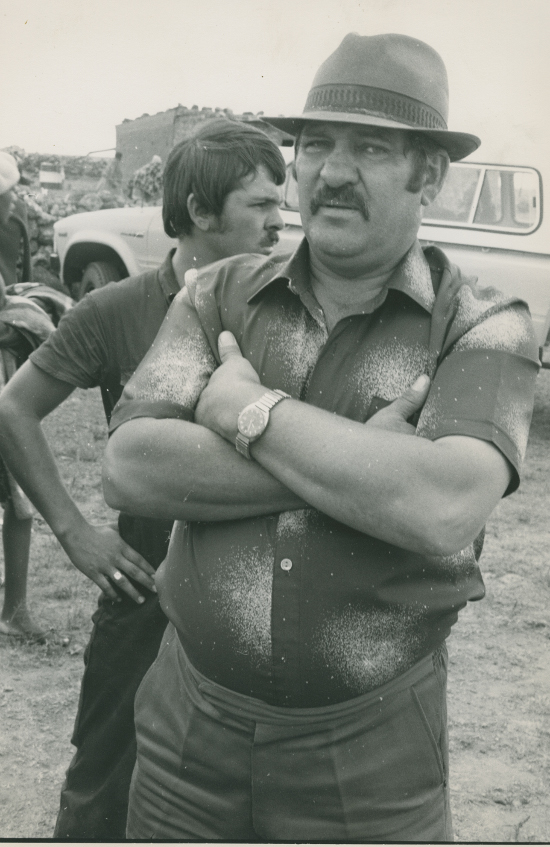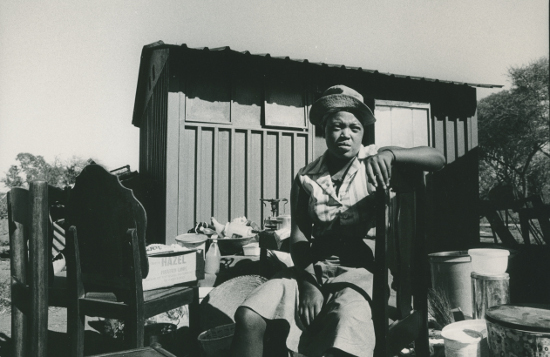“We are not prepared to move from our land. We want to live here.
If the government wants to remove us they must
rather shoot us and move our corpses.
We are not going anywhere again.”
Daniel Molefe
In the early hours of the morning on the 14 February 1984, the people of Mogopa found themselves rudely awoken to the reality of forced removals. Held at gunpoint and forced into trucks and buses with very few possessions they were taken to Pachsdraai. The community was surrounded by the South African police, doors were kicked in, women carried to waiting trucks and tribal leaders handcuffed and put in police vans. In the frenzy many people sold their livestock to the awaiting white farmers, at ridiculously low prices fearing that they would not return and therefore lose any livestock they had.

Moved from the land that their ancestors had legally bought some 70 years ago, the government saw an opportunity to remove the so called “black spot” when the headman, Jacob More was being deposed by the community for corruption. The local magistrate who heard the case against More ruled in his favour reinstating him as the headman of Mogopa. More, estranged from the community had secret meetings with the government in which he agreed to leave Mogopa for Pachsdraai and was handsomely compensated. He moved to Pachsdraai with 10 other families and was given the white famers residence that they had vacated in Pachsdraai. The community was not aware of the meetings that had been taking place between More and the Department of Co-operation and Development and neither were they consulted.
The community tried to get Jacob More and the government to make the meetings open to the villagers but it never happened. And on the 24 June 1983 bulldozers entered Mogopa tearing down schools and churches as a means of intimidating the people of Mogopa. After this a few people left for Pachsdraai fearing their safety and children’s education, but the majority were resilient, insisting that they would not move. There were no schools, no churches, no water pumps, no bus service with the bulldozers present and people fearing that their houses would be demolished.
The community received a small reprieve when the demolition team and bulldozers packed up. It appeared as if the community was on the mend. They managed to collect money for a new water pump, started informal schooling and approached the bus company to restore the service. However, on the 18 November 1983 an order from the State President was read to the community stating that they had 10 days to move to Pachsdraai and that transport would be made available for the move.
An intensive campaign started to change the government’s decision. Mogopa received national and international press coverage in the days leading up to the deadline. Bishop Tutu and other clergyman held an all night prayer vigil and on the morning of the deadline, 29 November 1983 the scheduled removal did not take place.
 The government however was determined to take control of their land, by refusing entry to journalists and clergymen they set the scene for the removal. Many people did not have the time to gather there possessions before they were carted out and dumped in Pachsdraai. They were taken from the homes that they had built to ill constructed shacks and unsuitable living conditions. Many people refused to stay in Pachsdraai and decided to move to Bethanie and live under their paramount chief.
The government however was determined to take control of their land, by refusing entry to journalists and clergymen they set the scene for the removal. Many people did not have the time to gather there possessions before they were carted out and dumped in Pachsdraai. They were taken from the homes that they had built to ill constructed shacks and unsuitable living conditions. Many people refused to stay in Pachsdraai and decided to move to Bethanie and live under their paramount chief.
Mogopa forms part of a larger project, the Land Act Legacy Project that is currently underway at SAHA and the project report will be launched in June this year.
> See inventory for the Gille de Vlieg photographic collection (AL3274)
> See inventory for the SAHA slide collection (AL2432)
> See inventory for the SAHA original photograph collection (AL2547)
> See inventory for the SAHA poster collection (AL2446)
> See inventory for the Laura Pollecutt collection (AL3117)








